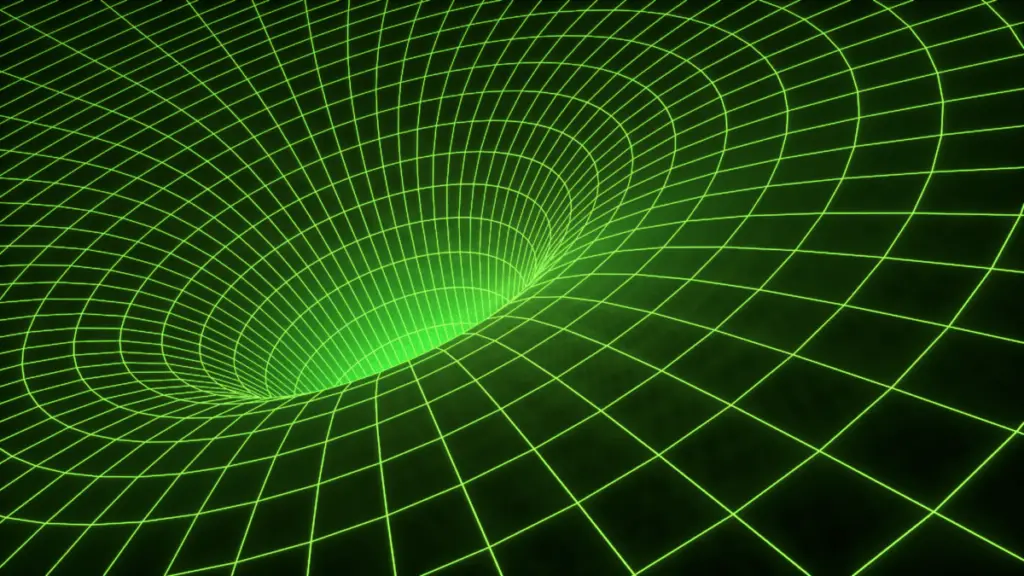Explanations for time dilation can be as simple or as complicated as a single sentence or a giant mathematical proof. As such, this article will only aim to introduce time dilation with the necessary amount of information required to understand the role it plays in interstellar travel.
Time dilation is the elapsed time difference between two clocks, with one (Clock A) in motion and the other (Clock B) at rest (or traveling at a lower velocity). The observer in the same reference frame as Clock B will measure the ticks of Clock A to be slower. This occurs either due to the relative velocity between the two clocks or to a difference in gravitational potential between their locations.
Let’s dig into it.
What is time dilation?
Returning home after work on an evening in 1905, Albert Einstein imagined how the Zytglogge Clock Tower would appear if the tram car he was on receded from it at the speed of light. He realized that if the tram were to travel at 299,792,458 m/s, the clock’s hands would appear to completely freeze, but with the same realization that it would also continue to tick at its normal pace back at the clock tower. (Science ABC)
Time had slowed down. Or rather, the faster one moved through space, the slower they would move through time. Time had dilated!

Now, I promised you guys no mathematical proofs, but understanding the time dilation equation is imperative to comprehend the concept of time dilation. I will be using examples that are easy to understand and provide simple explanations for each variable to hopefully make the process easier.
The example we are using can be illustrated through the interaction between a pair of childhood friends who own identical watches, with one on Earth and the other away on an interstellar trip traveling at 80% the speed of light.
The concept is very simple – Under the assumption that no malfunctions have occurred to both watches, the astronaut would have returned home after measuring six years in space and have aged 6 years, while his childhood friend would have measured ten passing years on Earth and have aged 10 years. Without accounting for any gravitational anomalies, which we will discuss in the next section of the article, the astronaut who traveled at a higher relative velocity with respect to his childhood friend had his time slowed, or dilated.
The equation for calculating time dilation is as follows:
t = t’ / [1 – (v2/c2)]1/2
Honestly, not too bad right? Here are what the variables mean:
t – The dilated time experienced in the reference frame of the observer and clock in motion. This is what would have been experienced by the astronaut.
t’ – The time experienced in the reference frame of the observer at rest or traveling at a lower relative velocity. This is what would have been experienced by the childhood friend back on Earth.
v – The relative velocity of the observer in motion with respect to the observer at rest or at a lower relative velocity. If the astronaut was traveling at 80% of the speed of light, and his childhood friend was not on Earth but instead traveling at 20% the speed of light, then the relative velocity of the astronaut would be 60% the speed of the light.
c – The speed of light in a vacuum (299,792,458 m/s).
If we were to work the equation with the values given by the example above:
t = 6 / [1- ((0.8c)2 / c2) ]1/2
t = 6 / (1- 0.82)1/2
t = 6 / 0.6
t = 10 years
According to this equation – the moving observer’s time will always be longer than the period of time experienced in the reference frame of the observer at rest or traveling at a lower relative velocity. The faster you move through space, the slower you move through time!
How does gravity affect time dilation?
Also referred to as gravitational time dilation – it is the difference in elapsed time between two observers as a result of varying gravitational potentials. Gravitational potential can be measured by the distance between the observer and the source of gravity. The lower the gravitational potential the slower time passes, and vice versa.

This is possible as gravity curves and contracts the geometry of spacetime inwards, which means a photon (traveling at light speed) will take longer to reach one point from another. In comparison to a weaker gravitational field with a lesser curvature – it will always take longer to travel a path of the same distance with a higher degree of curvature. Think of it this way: it was supposed to be a straight path from your house to the grocery store, but because of construction you had to go around. Which path would have taken longer?
These effects have been demonstrated through earth-bound experiments with the use of atomic clocks (the most accurate standard for time and frequency). The atomic clocks were placed at varying altitudes (different distances from the center of Earth means different gravitational potentials) which eventually showed different times. Unfortunately, these differences were detected in units of nanoseconds, which is considerably minuscule, but even such small differences aboard an airplane can have severe consequences. As it stands, the clocks aboard airplanes are always slightly faster than ground control, which requires the artificial satellites for the GPS to have their clocks corrected.
It has also been calculated that the core of the Earth is 2.5 years younger than the crust due to gravitational time dilation.
Despite not being able to collect experimental data of a greater magnitude, as it would require going greater distances from Earth or acquiring a stronger gravitational source – more extreme effects are seen portrayed in current day pop culture. In the film Interstellar, the protagonists landed on a planet so close to a rotating black hole that one hour on the surface was equivalent to seven years back on Earth!
The Biological Effects of Time Dilation During Space Travel
Temporal Frequency
How does the brain estimate time? Does it affect our biological functions? These are all important questions we have to answer to determine the biological effects of light-speed travel or travel near a supermassive object as it pertains to the dilation of time.
Many models of time perception have been proposed by biologists and psychologists, but experiments have shown the temporal frequency of a stimulus does ultimately serve as the “clock” for a perceived duration (1).
Temporal frequency – how many complete periods a signal goes through for a given unit of time (cycles/s)
As such, during time dilation, the apparent duration of a visual event will increase with increasing temporal frequency. In other words, a moving stimulus such as a black dot moving across a screen (with its cycles measured as a change in distance) would have been perceived to last longer than a stationary one, even when their actual presentation times (the unit of time) were physically equal (1).
It has to be understood that although the temporal frequency is the most fundamental factor for time dilation, it is not the only factor that determines our perceived duration. How the signals driven by temporal frequency interacts with more internally drive biological and neurophysiological signals needs further investigation.
Biological Spacetime
Maestrini et al. took the biology of time dilation in another direction and extended the concept of physical spacetime to the concept of “biological spacetime” in an effort to represent biological dynamics under the guise of an abstract and mathematically defined space. They attempted to investigate the contraction and dilation of biological spacetime as a result of accelerated motion, which can then be used to explore the different rates of aging (2).
Even under the normal passage of time, the rate of change of a person’s biological age can be greater or less than their chronological age.
The mathematical model Maestrini et al. developed “characterized one’s biological age by the degree of dilation or contraction of time resulting from the acceleration or deceleration of biological processes that are associated with their biological age.” (2)

Without getting into a long-winded explanation of the mathematical model, the different rates of aging between individuals could be compared by determining their acceleration or deceleration of biological processes in a frame of reference at rest (2). Using the methylation state of the genome as a biological marker for aging, the slowing down of the rate of demethylation is interpreted as a decelerating frame of reference, and the increasing rate of demethylation is interpreted as an accelerating frame of reference.
Just a little biology review to help understand the concepts better – the methylation of genomes (in your DNA) plays a crucial role in regulating gene transcription, which can determine the biological age of any tissue across the human lifespan. There is generally a global reduction of DNA methylation during a lifetime (3). As such, “the slowing down of the rate of demethylation” can be understood as a decrease in the rate of methylation, resulting in an increased rate of biological processes (age faster).
As such, time dilation is a consequence of a frame of reference with an increasing acceleration (the slowing down of biological processes – age slower), and vice versa for time contraction.
References
- Kanai, R., Paffen, C. L. E., Hogendoorn, H., & Verstraten, F. A. J. (2006). Time dilation in dynamic visual display. Journal of Vision, 6(12), 8. https://doi.org/10.1167/6.12.8
- Maestrini, D., Abler, D., Adhikarla, V., Armenian, S., Branciamore, S., Carlesso, N., Kuo, Y.-H., Marcucci, G., Sahoo, P., & Rockne, R. C. (2018). Aging in a Relativistic Biological Space-Time. Frontiers in Cell and Developmental Biology, 6, 1–13. https://doi.org/10.3389/fcell.2018.00055
- Jung, M., & Pfeifer, G. P. (2015). Aging and DNA methylation. BMC Biology, 13(1), 1–5. https://doi.org/10.1186/s12915-015-0118-4
